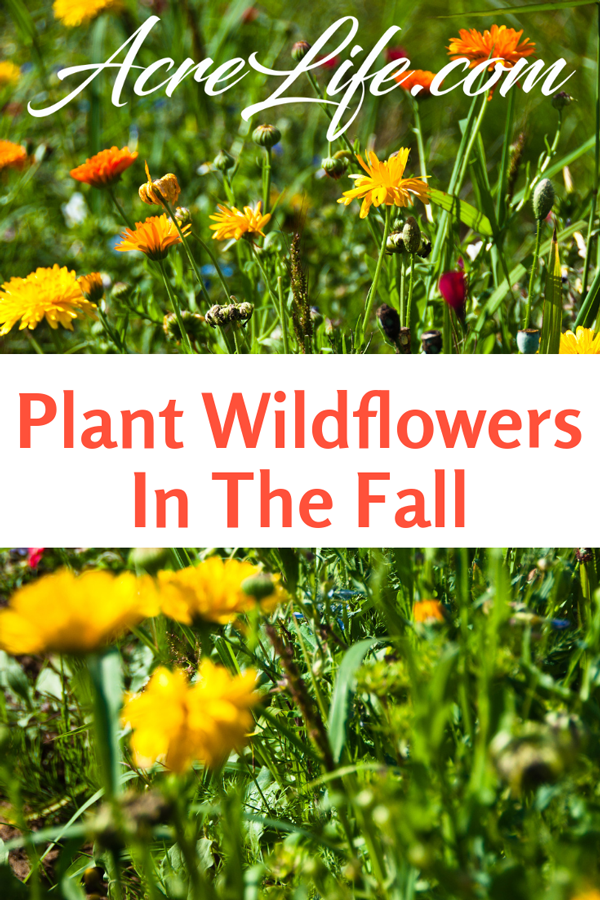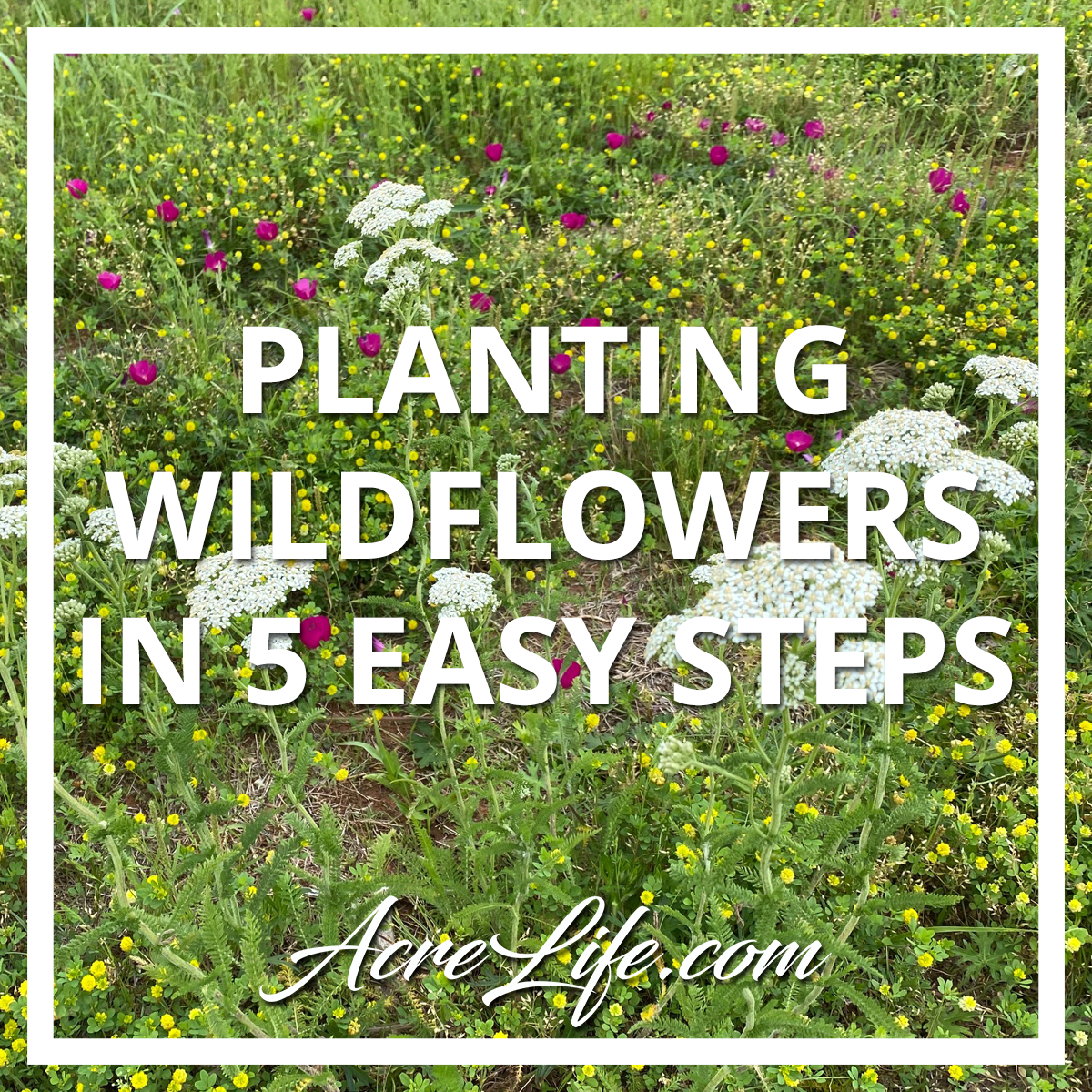
Planting Wildflowers in 5 Easy Steps
Wildflowers are important to pollinators like bees and butterflies. They also provide beauty to our landscapes so that we can also benefit from their presence. With so many of the natural wildflowers disappearing from farming and development, planting wildflowers on your land is essential if you have space. Luckily we do!
I have discussed the importance of wildflowers if you are a beekeeper. In case you missed it, you can read my post Should I plant wildflowers near the hive? Although we don’t have bees yet, we are planning to start our first hive in the spring. In anticipation of our new addition, I have been researching which wildflowers are the best for pollinators. I have learned that there are some flowers that are good for nectar, some that are good for pollen and some that provide both. I’ve also been careful to choose the flowers that grow best in my region and will thrive in the hot summer days that we have in Oklahoma.
I will break down my research into 5 easy steps but I encourage you to research for your own area. I have found an amazing website that gives all of the information found here but in much more detail. It is AmericanMeadows.com.
Planning for success
If you have read many of my posts you have probably realized that I am a planner. Sometimes I get stuck in the planning stage and have to really force myself to jump into the action stage. My goal is to help you spend less time “planning” and more time “doing” so that you can get your acreage up and running quickly.
- Determine the right wildflowers for your planting zone
- Choose the best planting time
- Prepare your planting site
- Plant your seeds
- Water
Determine your planting zone
To determine the optimal planting times for all types of crops the United States Department of Agriculture has divided the country into 13 regions based on their average low temperature. Each zone is separated by a 10-degree difference. To further break down the zones they are assigned “a” or “b” for areas separated by a 5-degree difference.
You can find an interactive map of the USDA Plant Hardiness Zones here.
Once you know which zone you are in you can begin to narrow down which flowers are suitable for your area. You will also want to read the descriptions of each variety before you purchase. I found that even though a flower grows well in zone 7, it wouldn’t work on my land. For example, the Swamp Milkweed grows well in zone 7, Southwest region, and full sun. So far that’s a perfect match! However it likes Average, Moist/Wet soil but my soil is Average, Dry/Well Drained soil. That’s not to say that the Swamp Milkweed wouldn’t grow in my fields, but my money could be used on more suitable seeds.
Choose the best time to plant
We all know that planting in the heat of summer does not give your plants a good foundation to thrive. Spring and Fall are usually the best time to plant any type of vegetation. I’ve always preferred to plant in the Spring because that makes more sense to me however I am going to plant my first crop of wildflowers this Fall. I have 4 reasons for making this decision.
- My bees will be arriving in April so I want to have the fields ready before they get here.
- I want to space out the many projects that are on my to-do list.
- I don’t have access to easily water such a large area.
- I’m excited and don’t want to wait until Spring!
Prepare your field
I naively thought that you just threw the seeds out and watered them in. That is NOT the case. You don’t want your wildflowers to have to compete with weeds and grass for water, nutrients, and sunlight. Wildflowers will be weak with long floppy stems if they are forced to compete. The good news is that wildflowers will grow in any well-drained soil. You can add sand to clay soil or compost to sandy soil to make it more suitable but it’s not necessary. The only thing that IS necessary is that you remove the grass and weeds. You can do this several ways depending on the amount of time that you have before you want to plant. In my case, it is also going to depend on the amount of space that I intend to plant.
Best ways to remove grass and weeds
- Roto-tilling – This is the best method for large areas. You should only till 4-6 inches deep.
- Shovel & Rake – Best if you have a small area to plant. Remove the vegetation and you are ready to plant.
- Solarization or Smothering – Cover your area with clear plastic or a dark cloth to block out sunlight and heat up the weeds. I love this method and am using it in my unused vegetable beds right now.
- Natural Herbicide – Probably the easiest method. Make sure that you use an herbicide intended for monocots or single blade grasses.
Plant your seeds
There are a few factors that you will want to pay close attention to when planting your seeds. If you are planting in the Spring make sure that the soil temperature is 55 degrees and that you are well past the threat of frost. You can check your soil temperature here. If you are planting in the Fall you will want to put your seeds down 60-90 days before the first frost. Make sure that you wait long enough that the ground isn’t still warm or your seeds will germinate and die off with the freeze.
Check out my detailed wildflower planting instructions.
You will want to pay attention to the application rate that is listed on the packaging of your wildflowers. To determine this you will need to know the square footage of your planting site. You can figure this out by multiplying the length x width of your space. There are other factors to consider as well such as the amount of coverage you want and the condition of your site. Here is a link to the American Meadows page to help you calculate how much seed you need. When you have the correct application rate you can either spread your seed by hand or with a spreader.
After you have spread your seed you will want to compress it into the soil. This will give your seeds a good anchor to the soil so they won’t be scattered by wind and rain. They will also have good contact with the nutrients needed to germinate. If you have a small area you can simply press the seeds down with your foot. You can also put down cardboard and walk on it to compress a larger area. If you have a field you will want to compress it with a seed roller. I am planning on using our Sticker Picker without a sleeve on it to see if it will compress the seeds.
I finally got our wildflowers planted!
Water your seeds
Your seeds need water to germinate and must be watered until they are 4-6 inches tall. You can accomplish this by setting up a sprinkler attached to a timer so that you can water without worry. You could also time your planting to coincide with Spring showers if you don’t have access to a water source. If you have an area that is not near a water source you should also consider planting in the Fall. This will allow you to take advantage of rain and snow.
You should begin to see growth 1-3 weeks after planting or after the ground has reached 55 degrees if you planted in the Fall. Blooms of annual flowers will appear in 6-12 weeks depending on the variety. Something that I didn’t realize is that if you plant a perennial wildflower it will not bloom until the 2nd year. Because of this, I am opting for a mixture of annuals and perennials so that my bees can enjoy flowers immediately.
Following these 5 easy steps should give you a beautiful wildflower garden. If you would like to read more in-depth about the planting process you can find it here.
Planting Wildflowers in Spring – American Meadows
Planting Wildflowers in Fall – American Meadows
